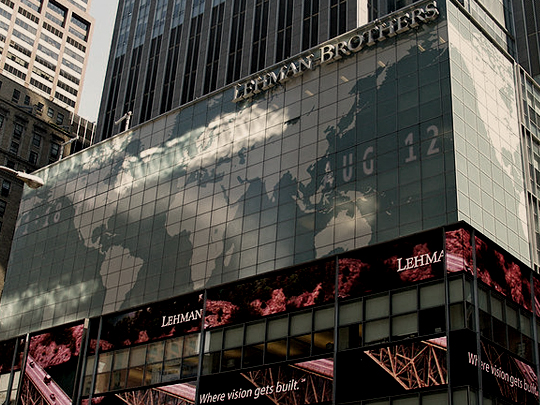Photo by David Shankbone / Wikimedia Commons / CC-BY-SA-3.0 / GFDL
1 – Lehman Brothers Collapse Sparks a Global Financial Crisis
The 2008 global financial crisis is considered by many economists to have been the most serious financial crisis since the Great Depression of the 1930s.
It began in 2007 with a crisis in the subprime mortgage market in the United States and developed into a full-blown international banking crisis following the collapse of the Lehman Brothers investment bank on 15 September 2008.
Up to that point, it had been assumed that governments would be able to step in and bail out any bank that got into serious trouble, as had been seen in the US, with a buyer found for Bear Stearns, while the UK had nationalized Northern Rock.
Excessive risk-taking by banks had only served to magnify the financial impact globally.
Massive bail-outs of financial institutions, along with other fiscal policies were used to prevent a possible collapse of the world financial system.
Following the collapse of Lehman Brothers, the threat of a domino effect through the global financial system forced western governments to inject huge sums into their banks to prevent them from collapsing.

These measures succeeded in rescuing the banks, but it was too late to prevent the global economic downturn. Consumer and business confidence collapsed.
In addition, there also followed a debt crisis in the banking system of the European countries using the euro.
In response to the financial crisis, a regulatory framework known as Basel III for capital and liquidity standards was agreed upon by countries around the world in November 2010.
The framework focuses on bank capital adequacy, stress testing, and market liquidity risk. This is intended to strengthen bank capital requirements by increasing bank liquidity and decreasing bank leverage.
The recession was not felt equally around the world, where particularly China and India’s economies grew substantially during this period.
2 – Experiments Using the Large Hadron Collider in CERN Begin
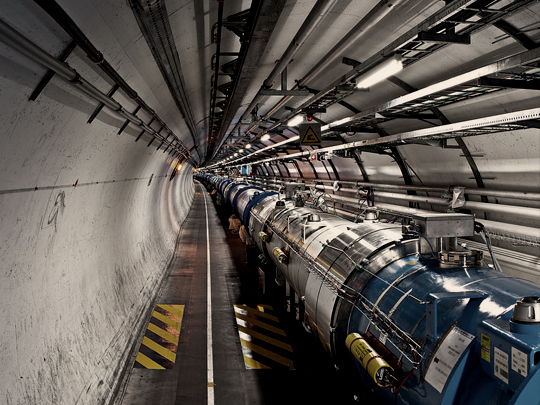
The Large Hadron Collider (LHC) is the world’s largest and most powerful particle collider and the largest machine in the world It was built by the European Organization for Nuclear Research (CERN) between 1998 and 2008.
The collaboration involves over 10,000 scientists and hundreds of universities and laboratories, as well as more than 100 countries.
It lies in a tunnel 27 kilometers (17 miles) in circumference beneath the France–Switzerland border near Geneva.
The LHC went live on 10 September 2008, but testing was then delayed for 14 months, until 20 November 2009, following an incident that caused extensive damage to over 50 superconducting magnets, their mountings, and the vacuum pipe.
In 2010, the LHC collided two opposing particle beams of either proton at up to 4 teraelectronvolts.
Discoveries during its first run included the long-sought Higgs boson, several composite particles, and the first creation of quark-gluon plasma.
The aim of the LHC is to test the predictions of different theories of particle physics, including measuring the properties of the Higgs boson and searching for new particles predicted by supersymmetric theories.
3 – Cyclone Nargis Devastates Myanmar
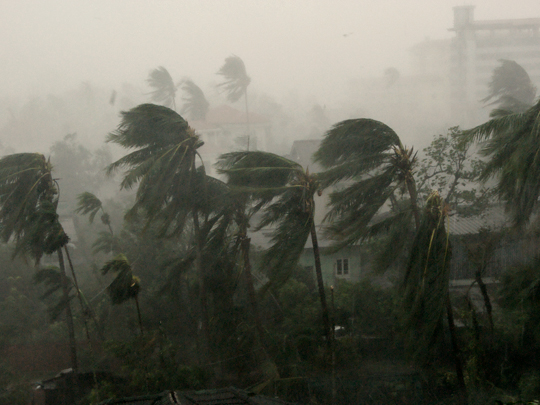
Cyclone Nargis caused the worst natural disaster in the recorded history of Myanmar during early May 2008.
The cyclone made landfall in Myanmar on 2 May 2008, sending a storm surge 40 kilometers up the densely populated Irrawaddy delta, causing catastrophic destruction and over 138,000 fatalities.
The Myanmar government’s official death toll may have been under-reported, and there have been allegations that officials stopped updating the death toll after 138,000 to minimize political fallout.
Nargis was the first named storm of the 2008 cyclone season in the North Indian Ocean.
It developed on 27 April in the Bay of Bengal, before making landfall in the Ayeyarwady region at peak intensity. It finally dissipated near the border of Myanmar and Thailand.
Nargis is recorded as the sixth-deadliest cyclone of all time, but could possibly be even higher on the list as the exact death toll is uncertain.
Relief efforts were slowed for political reasons as Myanmar’s military rulers initially resisted large-scale international aid.
The damage was estimated at over US$10 billion, which made it the most damaging cyclone ever recorded in the region.
4 – Buddhist Monks Protest March in Tibet, Commemorating Failed 1959 Uprising
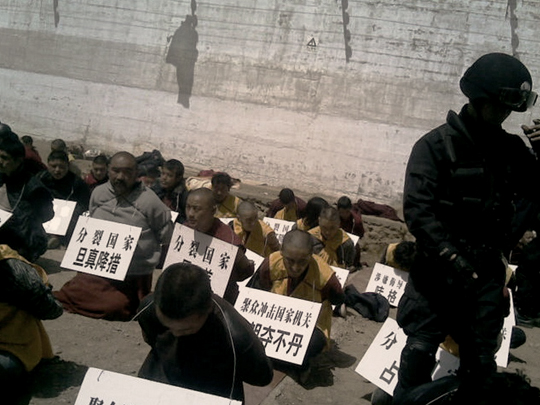
Tibetan Uprising Day, observed on 10 March, commemorates the 1959 Tibetan uprising against the presence of the People’s Republic of China in Tibet.
The failure of the armed rebellion resulted in a violent Chinese crackdown on Tibetan independence movements, and the Dalai Lama fleeing into exile.
In 2008, a series of riots and violent clashes broke out in the Tibetan city of Lhasa when monks were arrested during peaceful demonstrations.
The events in Lhasa triggered a nationwide uprising with protests occurring in every region. Police eventually forcefully intervened to bring an end to the unrest.
Casualty estimates vary, with the Chinese government claiming 23 people were killed during the riots, while the Tibetan government-in-exile claims 203 people were killed.
During the riots, Chinese authorities prohibited foreign and Hong Kong media from entering the region and forced those who were already there to leave soon after the unrest began.
Protests largely in support of the Tibetans erupted in cities across North America, Europe, India, Nepal, and Australia.
There was speculation that the violence might affect attendance at the 2008 Beijing Olympics, but in the end, the calls for a boycott went largely unheeded.
5 – The Russo-Georgian War
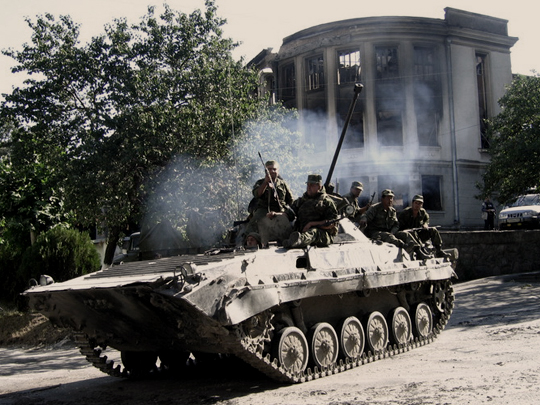
The Russo-Georgian War was a war between Georgia, Russia and the Russian-backed self-proclaimed republics of South Ossetia and Abkhazia, in August 2008.
After Georgia declared its independence from the Soviet Union in 1991, a war broke out between Georgia and separatists in South Ossetia. Afterward, a joint peacekeeping force of Georgian, Russian, and Ossetian troops was stationed there.
Meanwhile, a similar stalemate developed in the region of Abkhazia, where Abkhaz separatists waged war in 1992–1993.
Following Vladimir Putin’s election in Russia in 2000 and a pro-Western change of power in Georgia in 2003, relations between Russia and Georgia gradually deteriorated, before reaching a full diplomatic crisis in April 2008.
On 1 August 2008, South Ossetian separatists began shelling Georgian villages, breaking a 1992 ceasefire agreement.
By 7 August, the Georgian Army was sent to the South Ossetian to restore order. The Georgians took control of most of the separatist stronghold within in hours.
Russian troops illegally crossed the Russo-Georgian state border and had advanced into the South Ossetian conflict zone by 7 August prior to the Georgian military response.
On 8 August, Russia accused Georgia of aggression against South Ossetia and launched a large-scale invasion of Georgia.
Russian and South Ossetian forces fought Georgian forces for several days until the Georgians retreated.
Russian and Abkhaz forces then opened a second front by attacking the Kodori Gorge held by Georgia, while the Russian Navy blockaded part of the Georgian coast, and the Russian air force attacked targets beyond the conflict zone.
A ceasefire agreement was negotiated on 12 August by Nicolas Sarkozy, the President of France, who also held the European Union presidency at the time.
Two weeks later, Russia recognized the independence of Abkhazia and South Ossetia from Georgia, prompting the Georgian government to sever diplomatic relations with Russia.
South Ossetians destroyed most ethnic Georgian villages in South Ossetia and were responsible for the ethnic cleansing of Georgians.
As of 2014, over 20,000 people, mostly ethnic Georgians, remained displaced as a result of the war.
Since the war, Russia has occupied Abkhazia and South Ossetia in violation of the ceasefire agreement of August 2008. It is regarded as the first European war of the 21st century.
